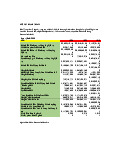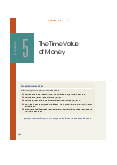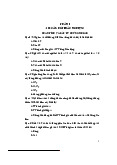















Preview text:
How to Create a Customer Journey Map Mark S. Rosenbaum*
Associate Professor, Externado University, Bogota, Colombia
Kohl’s Corporation Professor of Retail Marketing Northern Illinois University
College of Business, Department of Marketing DeKalb, IL 60115 630.414.6989 (phone) 815.753.6014 (fax) mrosenbaum@niu.edu Mauricio Losada Otalora Assistant Professor Externado University Department of Management 57.3420288 (phone) 57.2839421 (fax)
mauricio.losada@uexternado.edu.co Germán Contreras Ramírez Assistant Professor Externado University College of Business Management Department
german.contreras@uexternado.edu.co 1
How to create a realistic customer journey map Abstract
Although many articles discuss customer journey mapping (CJM), both academics and
practitioners still question the best ways to model the consumer decision journey. We
contend that most customer journey maps are inherently flawed because they assume that
all an organization’s customers experience the same organizational touchpoints and hence,
that customers view these touchpoints as equally important. Further, management lacks an
understanding of how to use CJM as a cross-functional strategic tool that promotes service
innovation. This article proposes a solution to the CJM complexity by linking customer
research to the CJM process and by showing managers how to develop a customer journey
map that improves a customers’ experience at each touchpoint. We show in the case of an
actual retail mall that CJM assumptions regarding the equal importance of all touchpoints
are fundamentally wrong and how retail managers, and strategic planners, may easily make
incorrect decisions about customers’ experiences. This article demonstrates how customer
research helped a mall’s strategic management team understand which touchpoints were
more and less critical to customers’ experiences. Next, we proposed key strategic initiatives
at each touchpoint that resulted in cross-functional input regarding service innovation at the mall.
Keywords: Mall management; retail; Customer experience; Customer journey mapping; service innovation 2
1. The customer journey map confusion
Customer journey mapping (CJM) is an increasingly popular strategic management tool
praised by both academics and practitioners for its usefulness in understanding an
organization’s customer experiences. Although CJM articles are replete in academic and
managerial literature and many service organizations employ CJM, confusion still exists as
to how best to create a CJM. Indeed, the Marketing Science Institute (MSI; 2014) identifies
research that addresses the best ways to model the customer decision journey process as a
major research priority for practitioners and academics alike.
This article clarifies the confusion surrounding CJM by putting forth a method that
blends consumer feedback and research into the CJM process, using an actual retail mall as
an exemplar. We show how organizations can create and implement realistic customer
journey maps that are integral to understanding the customer experience and to maximizing
CJM as a strategic management tool for service innovation within a service innovation.
2. Understanding the CJM process
The fundamental idea behind CJM is relatively simple; it is a visual depiction of the
sequence of events through which customers may interact with a service organization,
during an entire purchase process. That is, CJM represents a graphical representation of all
the possible organizational “touchpoints” that customers may encounter during an entire
exchange process. Once management clearly understands it customers’ touchpoints, senior
management may work with its cross-functional team members to employ various tactics
that foster service innovation. The goal of these tactics is to enhance customer-service
provider interactions by improving customer experiences associated with each touchpoint. 3
Touchpoints are typically depicted horizontally on customer journey maps in
accordance with a process time line. The time line is then separated into three periods: pre-
service, service, and post-service. The pre-service period refers to customer experiences
before an actual service begins. In the CJM process for a mall, pre-service customer
experiences may include touchpoints such as seeing mall advertisements, listening to a
radio advertisement, or receiving an e-mail solicitation. The service period refers to
touchpoints that customers experience during an actual service, such as entering the mall’s
parking lot, interacting with employees, entering stores, and interacting with mall kiosks.
The post-service period refers to customers’ experiences that take place after the actual
service. Touchpoints in this period may include a customer posting a picture of a purchased
item on Facebook, returning merchandise, or receiving an incentive to return to the mall.
Once managers have identified all the customer touchpoints in the three periods,
they are encouraged to develop strategic categories, along a so-called vertical axis, which
depict managerially-relevant strategic initiatives that are associated with each touchpoint.
Whereas the horizontal axis is relatively easy to comprehend, the development of the
vertical axis in the CJM process is significantly more complex. However, the effectiveness
of a customer journey map as an innovation tool depends of the vertical axis.
Some CJM pundits scrap the importance of the vertical axis altogether, and focus on
considering CJM as solely a graphical representation of a customer’s touchpoints with an
organization. Although this visualization technique may aid managerial understanding of its
customers’ experiences with an organization, it leaves management with a dysfunctional
tool that is essentially useless in helping promote service innovation within a service
system. Other CJM pundits encourage mangers to develop the vertical axis as an emotional
journey which encourages managers to consider how its customers’ thoughts, beliefs, 4
feelings, and emotions that cannot be observed directly (Craig, 2011; Lingqvist, Plotkin, &
Stanley, 2015). This emotional emphasis transforms CJM into a very specific management
tool; namely, an empathy mapping exercise (Tschimmel, 2012). Although an empathy map
represents a useful service design tool, its ability in helping managers understanding the
complexity and interdependence inherent within service systems is extremely limiting.
Finally, other CJM advocates consider the vertical axis as a “managerial
hodgepodge,” essentially a space where managers may plan a myriad of activities such as
design opportunities, customer objectives, employee tasks, branding opportunities, omni-
channel retailing opportunities and so forth role of omni-channel retailing (Court, Elzinga,
Mulder, & Vetvik, 2009; Dasu & Chase, 2010; Skinner, 2010). The issue here is that as
CJM expands vertically, its complexity, and confusion, may also expand. Managers should
consider the vertical axis of a customer journey map as specifying the key components of
its entire service system, which show how marketing, human resources, operations, and
information technology may work together to meet a customer’s expectations at every
touchpoint. By doing so, the CJM process is inherently linked to the service blueprinting
process, which is another service innovation tool (Bitner, Morgan, & Ostrom, 2008).
3. A realistic customer journey map that fosters innovation
We believe that three major factors limit mangers from fully employing the CJM for service
innovation and improvement. First, although scholars have constructed CJM from a
theoretical perspective (Clarke, 2014), studies offering real examples and instructions for
managerial interpretation remain scarce. Second, an inherent assumption in CJM is that all
customers experience each horizontal touchpoint and that each touchpoint is equally
important from the customers’ perspectives. Thus, customer journey maps for complex
services, with many touchpoints, may be difficult to create and to understand. Third, 5
managers may become disillusioned with the CJM process due to a lack of understanding
how the vertical-axis illustrates cross-functional interdependencies of a service system at
each touchpoint. We address these limitations in an actual CJM example.
3.1. Develop the horizontal axis with customer research
Highland Park Mall (HPM), a pseudonym of its real name, is one of the world’s largest
indoor shopping malls, offering customers a diverse range of shopping, entertainment, and
food/beverage options. In addition, HPM operates its own website, actively participates in
social media, uses online and in-store promotions, and is active in building community
relations by serving as an event venue for many community groups.
We began the CJM process by meeting with HPM’s management team to identify
the touchpoints customers may experience during a trip to the mall; these touchpoints were
diagrammed on the horizontal axis. The touchpoints were categorized into three periods:
those that transpire before, during, and after service. This activity resulted in the
identification of sixty customer touchpoints illustrating moments when customers have a
point of interaction in the mall. Of these, thirty-seven represent pre-service touchpoints,
fourteen represent service touchpoints, and nine represent post-service touchpoints.
As we previously discussed, a limitation of the CJM process is an assumption that
that each customer touchpoint is equally important in the planning process and thus, should
be managed with the same level of importance. To address this limitations, we linked
marketing research to the CJM process. We obtained customer response data through self-
administered questionnaires that were randomly distributed to 100 customers in various
parts of the mall. Seventy-five respondents were women and 25 were men; their ages
ranged from 18 to 75 years. The respondents represented a convenience sample of mall
customers who volunteered to take part in the study, and each respondent received a small 6
monetary incentive from the mall for their time. We asked the respondents to complete a
questionnaire on whether they had engaged in each of the 60 identified touchpoints that day
(0 = no, 1 = yes). We then worked with senior management to select the top 10 touchpoints
based upon the respondents’ stated importance.
Table 1 illustrates the percentage of mall customers who self-reported experiencing
each touchpoint; in doing so, the table dispels the assumption that all touchpoints are
equally important from a strategic managerial perspective. That is, not a single touchpoint
was truly experienced by every respondent, with results ranging from 95% (recommend a
store that is located in HPM to others) to 46% (received comments from others that were
shopping with you. It is worth noting here that management had originally put forth sixty
customer touchpoints; however, less than 50% of mall shoppers had experienced fifty of
them. The traditional disconnect between the CJM process and marketing research results
in customer journey maps that overestimate the number of strategic touchpoints that most
customers experience, and, inadvertently, cause managers to become overwhelmed by the
concept of “experiential marketing” as depicted in a complex customer journey map.
3.2. Develop the vertical axis for service innovation
We developed the vertical axis of the CJM by focusing on managerial practices that in
tandem help ensure that mall customers experience each touchpoint in a satisfactory
manner. Further, we believe that the vertical axis should depict managerial cross-
functional actions within a service system which are inextricably linked at the touchpoint,
as doing so links the CJM process to service blueprinting and to service innovation. In the
case of the HPM, we define the vertical axis and the department responsible for strategic
management regarding the particular customer touchpoint. 7 1.
Mall shopper (customer) requirements: Specify the mall shopper (customer)
requirements that are required at the touchpoint (Marketing). 2.
Employee actions: Specify the mall employee actions that are required at
the touchpoint to meet the customer requirement (Human resources). 3.
Employee support: Specify training, information technology, licenses,
certification, tools, materials, and so forth, that mall employees need to meet the
requirement at the touchpoint (Human resources and operations management). 4.
Mall design: Specify the environmental stimuli that customers should sense,
and should not sense, at each touchpoint to help them judge service quality (Marketing,
operations management, building engineering). 5.
Service innovation: Brainstorm on how all departments may work together
at the touchpoint to improve the customer experience (all departments). Consider
eliminating potential service failures and customer “pain points” at the touchpoint.
4. Lessons learned: A practical guide to CJM
Table 2 represents the HPM’s CJM for its pre-service period. The key customer
touchpoints during this time period are a mall shoppers previous visit to the mall,
conversations about the mall to others, as well as seeing a highway billboard on the way to
the mall. Once the mall realized the importance of these three pre-service touchpoints, it
then planned strategic initiatives at each of the touchpoints, and most importantly, service
innovation strategies that improved shoppers’ experiences with the mall. For example,
given the importance of a shopper’s past experience in encouraging future behavior, the
mall decided to station customer ambassadors at each mall entrance to encourage shoppers
to provide feedback and to enter into a raffle at the desk by “checking-in” on social media
or using the mall’s hashtag. Also, based upon the research knowledge that the majority of 8
mall shoppers noticed the mall’s highway billboards on their way to the mall, management
worked with a third-party specialist on improving signage by implementing three-
dimensional billboards, which featured moving parts (e.g., a mall shopping bag).
Table 3 represents four major customer touchpoints that occur during the service
period. These touchpoints deal with mall shoppers using the parking lot, using coupons
(received prior to the visit), using in-store incentives and discounts, and receiving
comments from others during shopping. This information led mall management to
implement a real-time parking lot technology system that counted spaces available in the
lot for customers. Also, give the knowledge that many shoppers responded to incentives
during the pre-service and service periods, the mall worked with its advertising agency and
tenants to ensure a consistent branding strategy when the mall logo is employed. Next, the
mall implemented free Wifi throughout the mall, to encourage shopper communication, and
integrated real-time promotions with its mobile application and Facebook page.
Lastly, Table 4 represents three major touchpoints that transpire after a shopper
leaves the mall; these are, recommend a particular store, talk to others about purchases, and
plan a return trip to the mall. During the CJM process, mall management discovered the
importance of shopper communication about the mall to others. This encouraged the mall
to launch online initiatives that encourage shoppers to share their experiences, and
recommendations, on the mall’s interactive blog and online customer forum. In addition, to
encourage shoppers to spread word-of-mouth, the mall designated two areas with an
interactive mall display that encouraged shoppers to post pictures of themselves enjoying
their new products or simply enjoying the mall experience. 9
5.0 Conclusion: CJM can be a strategic innovation tool
This HPM customer journey map offers all service organizations valuable insights into the
mapping process. First, we encourage managers to resist designing “all-inclusive”
customer journey maps that contain all possible touchpoints, in turn resulting in highly
complex CJM that customers may or may not follow. To build a useful CJM, managers
need to gather customer information and identify critical and less important touchpoints.
We encourage managers to follow HPM’s approach and directly ask customers which
touchpoints they experience when making their journey throughout a service organization.
This approach may be demanding in time and resources at the beginning; however, this
extra effort may be compensated by benefits in CJM simplicity and usability. CJM must
diagram what customers really “do” instead of what managers “imagine” they do.
We further encourage managers to develop the vertical axis categories so that they
represent cross-functional strategic initiatives that inextricably link together marketing,
human resources, operations, and information technology at each touchpoint. By doing so,
a customer journey map becomes a strategic tool for service innovation and a visual
depiction of how an entire service system may work together at each touchpoint to improve
a customer’s experience. It is worth noting here that managers may develop additional
planning categories along the vertical axis, such as categories that deal with branding
opportunities and customer emotions; however, as the vertical axis expands in complexity,
its efficacy as a management tool may decrease. Overall, the HPM customer journey map
was successful because mall management focused on visually detailing impactful customer
touchpoints and drew upon cross-functional teams to implement strategic initiatives that
improved a mall shopper’s experience at each of touchpoint. 10




